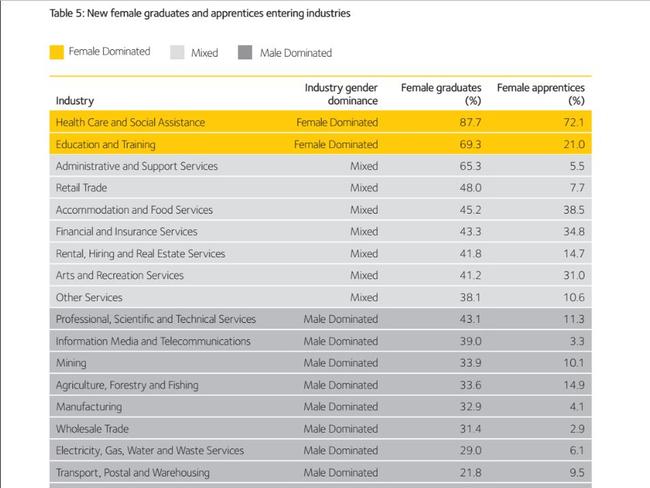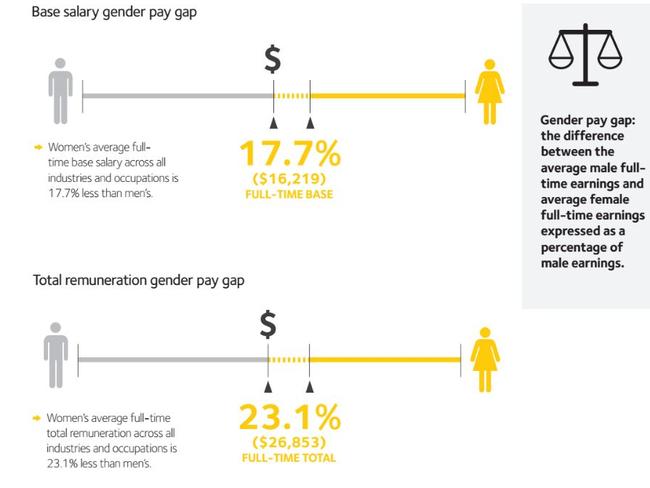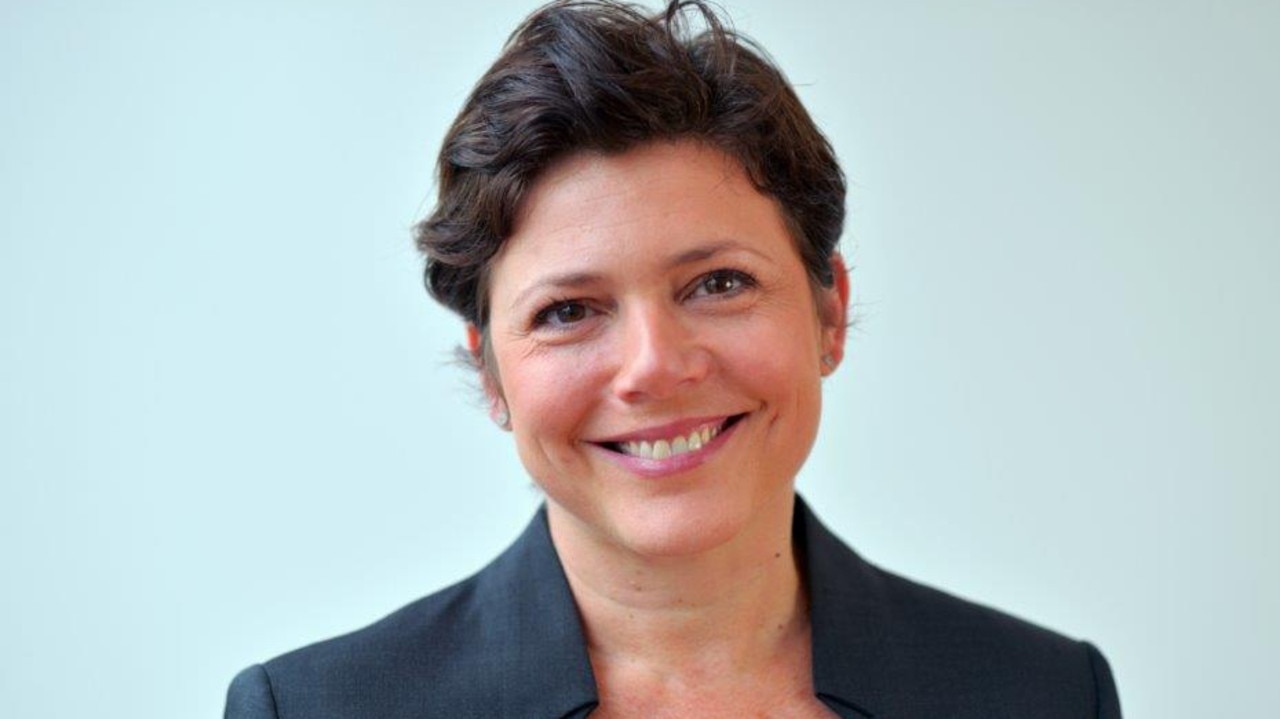Equal Pay Day highlights need to end outrageous gender pay gap
IT’S a shameful fact that Australian women earn on average $251 a week less than men for their full-time work — so why do we tolerate it, asks Wendy Tuohy.

Wendy Tuohy
Don't miss out on the headlines from Wendy Tuohy. Followed categories will be added to My News.
THE #EqualPayDay Twitter hashtag has been going off all day as women discuss the outrageous fact that in 2017 we’re still earning 15.3 per cent less money in full-time jobs than Australian men.
Perhaps presenter Tracey Spicer put it best: “Seriously, it’s time to go back to the barricades about this s---.”
She was responding to an article inviting women to consider what they would do with the extra $13,000 a year they would have if they earned the same as the average full-time working man.

For some, the answer would be: help create housing security for myself (and my family), flee a dangerous living situation, get health insurance or help afford further education to improve my career progression and ensure financial independence into the future.
There’s a sense of disgust and disbelief that Australian women earn on average $251 a week less than men for their full-time work, and end up with 52 per cent less superannuation savings than men.
This, along with longer lifespans, is contributing to an increasing number of women retiring into a life on the poverty line, in effect a harmful economic-empowerment gap.
Research last year by Monash University found one in three women over 60 is living in “permanent income poverty”.
Many of those slipped out of work altogether as they conformed to societal expectations of women doing the unpaid work of raising children, which is still a huge driver of the unbustable gender pay gap.

And don’t think there won’t be another generation of struggling women coming up behind them — at the current rate, the Workplace Gender Equality Agency estimates it will take 50 years for women’s average income to equal that of men’s.
Equal Pay Day, by the way, marks the extra time a woman has to work after the end of the financial year to bring her income into line with the average full-time working male (this year, it’s a thoroughly unacceptable two months).
Put another way, it means the average full-time working woman stops being paid from about 3.45pm, while the guy next her is paid for his full day’s efforts.
And before you hit your keyboard to rage about the pay gap being a myth, know that it is derived from the Australian Bureau of Statistics’ average full-time weekly earnings data.
It’s hard to fathom why this gaping inequality so widely tolerated, given women’s workplace participation is a record high 60 per cent and powerful advocates including Minister for Women Michaelia Cash, are (finally) speaking up.

Adding to that, gender targets are in place at many organisations, including the public service. Vocal supporters in groups such as Male Champions of Change are also doing their bit, while businesses are seeing in their own data that more diverse divisions are meeting production targets better.
But there’s one reason the pay gap is at its worst in women’s 40s and 50s.
It’s still regarded as a privilege for women to be allowed to take time out of full-time work to parent, and they’re expected to suck it up when they get back into the workforce and the guy who was at their level has been promoted, while they’re they must “reset” employer expectations.
One in three working women has reported pregnancy or post-birth discrimination by their employer — this can show up in lower pay from childbirth on.
Minister Cash’s call for women to be promoted while on maternity leave if they are the best candidate for the job is a no-brainer and should be adopted by any company wanting to attract and keep the most qualified employees.

Mandatory reporting of workplace gender audits is a brilliant idea.
Don’t the people (mainly men) running these companies want a more transparently fair workplace for their daughters?
Only 27 per cent of employers audit their internal gender pay gap now.
Societal change is required for work traditionally performed by women, or “feminised” work, to be regarded as just as important as work traditionally done by men.
The so-called gender-segregated workforce is another big cause of huge economic disadvantage faced by women earing less for their labour.
The impact of gender segregated work on women’s economic status is, at least, being taken seriously Federal government level, where it continues to be examined and strategies considered.
In the meantime, Tracey Spicer is right: we shouldn’t have to, but it’s time women unashamedly fight to close this insidious gap — and the guys sitting next to us are warmly invited to join in.


